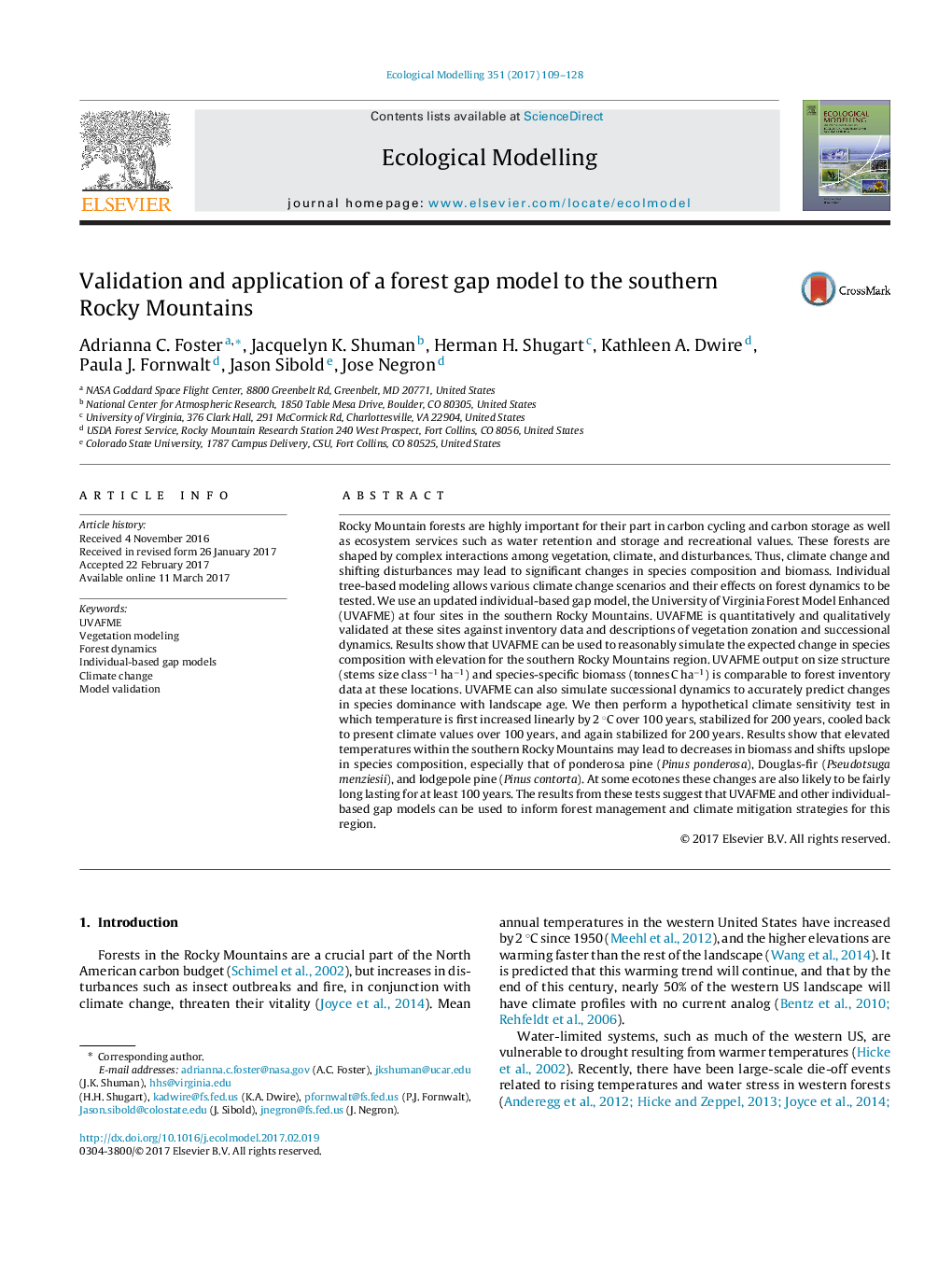| کد مقاله | کد نشریه | سال انتشار | مقاله انگلیسی | نسخه تمام متن |
|---|---|---|---|---|
| 5742224 | 1617396 | 2017 | 20 صفحه PDF | دانلود رایگان |
- UVAFME can be used to simulate forest dynamics in the southern Rocky Mountains.
- A 2 °C increase may result in significant changes in biomass and species composition.
- Forest ecotones may shift upslope under climate warming.
- Models like UVAFME can be used to help understand the future of valuable ecosystems.
Rocky Mountain forests are highly important for their part in carbon cycling and carbon storage as well as ecosystem services such as water retention and storage and recreational values. These forests are shaped by complex interactions among vegetation, climate, and disturbances. Thus, climate change and shifting disturbances may lead to significant changes in species composition and biomass. Individual tree-based modeling allows various climate change scenarios and their effects on forest dynamics to be tested. We use an updated individual-based gap model, the University of Virginia Forest Model Enhanced (UVAFME) at four sites in the southern Rocky Mountains. UVAFME is quantitatively and qualitatively validated at these sites against inventory data and descriptions of vegetation zonation and successional dynamics. Results show that UVAFME can be used to reasonably simulate the expected change in species composition with elevation for the southern Rocky Mountains region. UVAFME output on size structure (stems size classâ1 haâ1) and species-specific biomass (tonnes C haâ1) is comparable to forest inventory data at these locations. UVAFME can also simulate successional dynamics to accurately predict changes in species dominance with landscape age. We then perform a hypothetical climate sensitivity test in which temperature is first increased linearly by 2 °C over 100 years, stabilized for 200 years, cooled back to present climate values over 100 years, and again stabilized for 200 years. Results show that elevated temperatures within the southern Rocky Mountains may lead to decreases in biomass and shifts upslope in species composition, especially that of ponderosa pine (Pinus ponderosa), Douglas-fir (Pseudotsuga menziesii), and lodgepole pine (Pinus contorta). At some ecotones these changes are also likely to be fairly long lasting for at least 100 years. The results from these tests suggest that UVAFME and other individual-based gap models can be used to inform forest management and climate mitigation strategies for this region.
Journal: Ecological Modelling - Volume 351, 10 May 2017, Pages 109-128
